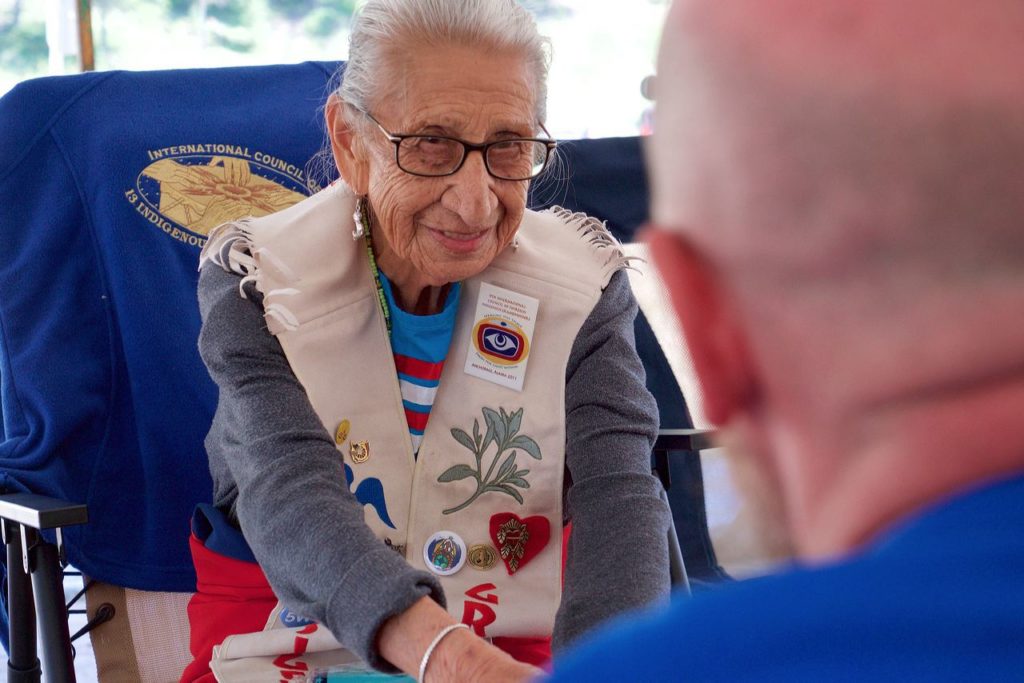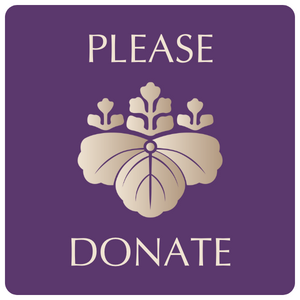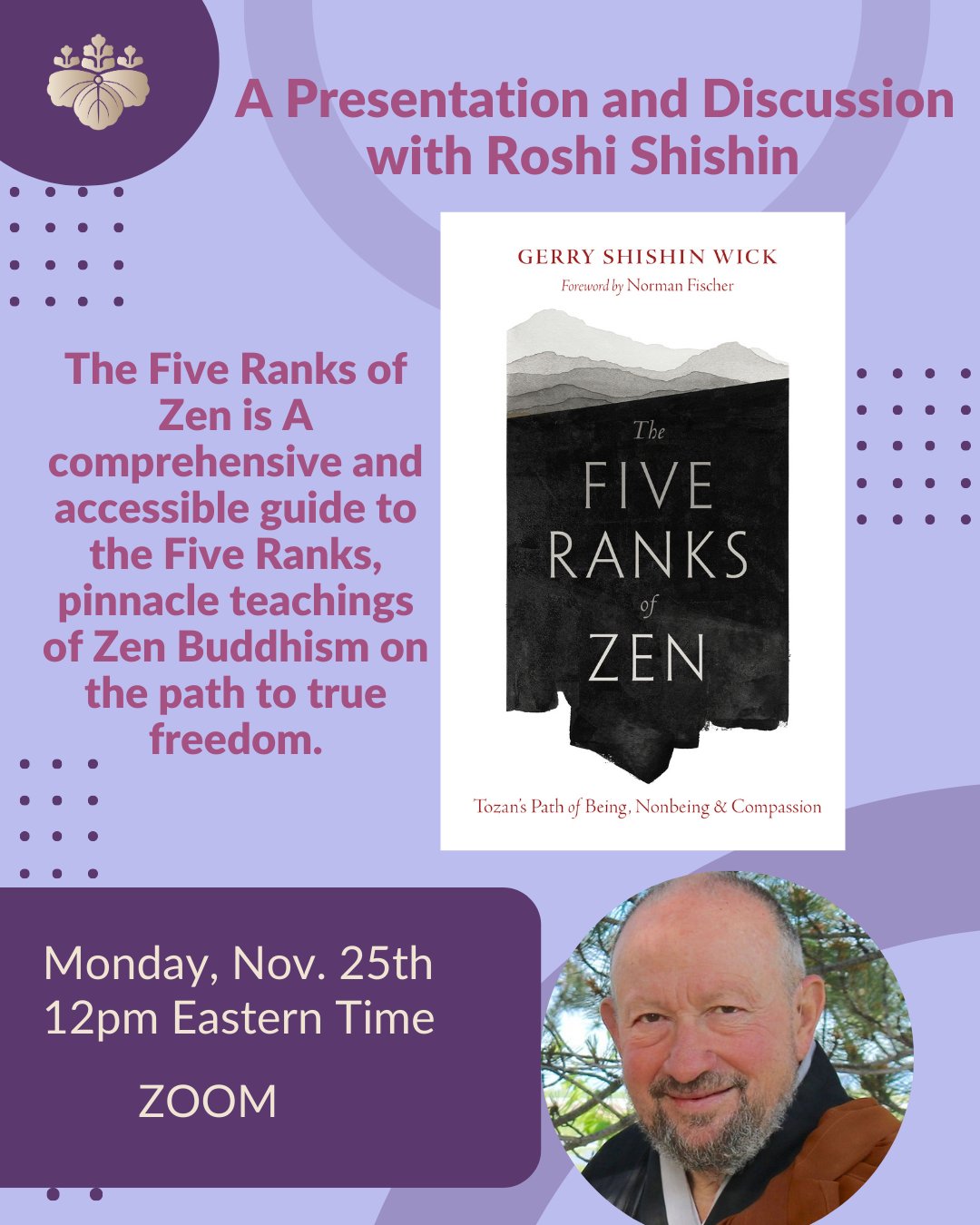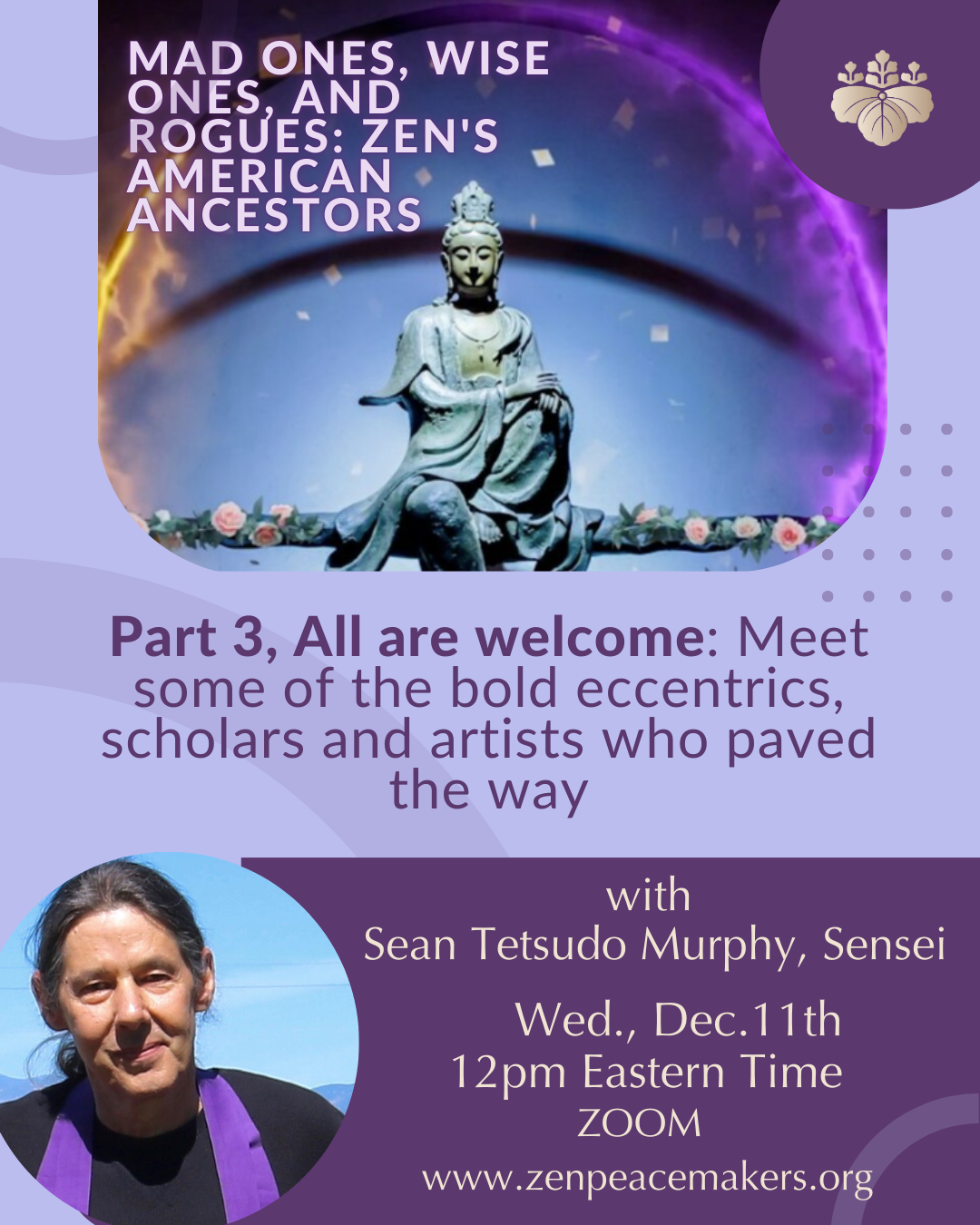GOING BACK–AGAIN AND AGAIN
By Roshi Eve Myonen Marko
Grandmother Beatrice Long Visitor Holy Dance died this past week. She is one of the Thirteen Indigenous Grandmothers representing native peoples all over the world, leading petitions and prayers for peace, human rights and the rights of our planet and its citizens.
Grandmother Beatrice, an Oglala Lakota, came to the Zen Peacemakers’ retreat at the Black Hills last August along with her daughter, Loretta. She was already somewhat frail, but I was deeply moved to see her. How strong these Lakota women have had to be! They raise not just children but also nephews, nieces and grandchildren, and are often the most consistent breadwinners for their families. Grandmother Beatrice was no different, and in her younger years had to combat alcoholism like many other Lakota. But she became a leader and an inspiration to others, advocating finally not just on behalf of her native land and people but also for the entire globe.
I often wonder about how people who’ve gone through trauma heal themselves. This question has accompanied me all my life. While other children grew up on Mother Goose rhymes, I grew up on my mother’s stories of the Holocaust. I couldn’t possibly understand the full extent of what she carried, but I did get just enough to wonder how one continues after such a childhood. How do you live with these memories and voices, these pictures in your mind? How do you not go crazy? And how do a few, like Grandmother Beatrice, use these kinds of early concussions as ballast to push off from and surge upwards, helping others rise, too?
In July 2016 we return to the Black Hills to bear witness once more to this sacred place, promised by treaty to the Lakota and then sold down the river for gold. After gold, for other metals, the most recent one being uranium. It’s our old Western way of doing business, not just selling off the earth and its inhabitants as if they’re ours to sell, but also selling off our own word, our own honor.
What I’m thinking of today is the slow step-by-step process of healing, which has to start with letting go of denial and facing the consequences of our actions. So the retreat begins with a visit to the Pine Ridge Reservation, one of the poorest areas in our country. We go to Wounded Knee, the last massacre of the Plains Indians, which took place in 1890. And then we stay at the Black Hills, one of the most gorgeous places in this country, mark the presence of what’s still there (elk and antelope) and what’s not (herds of buffalo). We listen to Indian elders describe not just the past but also the present, and not just the present but also prophecies for a future. We do ceremonies, council, and meditation, we walk in the Hills and bear witness to the confluence of these two vastly different cultures and the people we’ve become.
At the end, I experience a growing sense of us as one whole people, one whole earth. It’s a slow process, one person at a time. For me it’s a commitment to go back again and again, knowing that this job won’ be finished in my lifetime, that it’s a step by step, year by year process—which is no reason not to do anything but rather a push to get on with it. It’s not my work, but the work of generations, with my being just the smallest of birds flapping its wings to keep the air currents circling, the fire burning, the work flowing and growing—and encouraging others to do the same.
Read more of Eve’s writings on her blog www.evemarko.com




